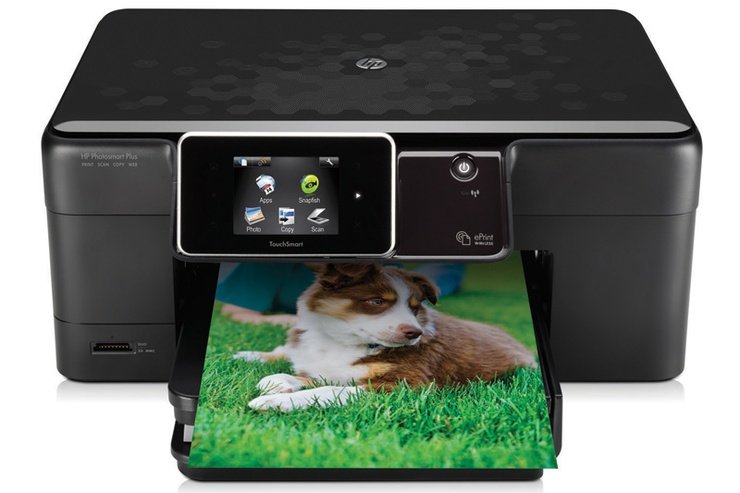Understanding the Basics: The Difference Between Color And Monochrome Printers
Introduction
If you're considering purchasing a printer for personal or business use, you'll soon discover there are many options available. Among these, color and monochrome printers stand out as popular choices. Each with its unique features, they cater to different printing needs for individuals and businesses. In this article, we aim to help you understand the critical differences between these two types of printers in terms of functionality, cost, and suitability.
What Are Color Printers?
Color printers are unique in their advanced print capabilities. These devices use a combination of four different types of inks: Cyan, Magenta, Yellow, and Black, collectively known as CMYK. The intriguing aspect of these printers is their ability to produce a vast spectrum of colors stemming from the interaction of these inks. This makes them well-suited for delivering:
- High-quality photographs: They have the ability to reproduce lifelike photos with depth and accurate color representation.

- Eye-catching illustrations: Color printers can print vivid artwork in all its originality, capturing the whole range of colors.
- Impactful marketing materials: If you need to create vibrant banners, flyers, or posters, color printers do the job perfectly.

They find common use in establishments that require colorful prints regularly, such as advertising agencies, design studios, and private homes, wherever color printing is a necessary part of work.
What Are Monochrome Printers?
Monochrome printers are a unique classification within the broader category of printers. Let’s dive deeper into their characteristics:
- Single Color Usage: Unlike color printers that use a combination of cyan, magenta, yellow, and black inks, monochrome printers streamline their operations using only black ink. This limits their outputs to black and white prints.
- Speed and Efficiency: These printers are designed for speed and efficiency. With the use of only black ink, these devices can rapidly churn out multiple pages of text, making them great for high-volume printing jobs.
- Ideal for Text Documents: Schools, offices, or any other settings that entail massive printing of text-centered documents typically opt for monochrome printers. They excel at creating clear, clean text, which is particularly advantageous for paper works such as reports and drafts.
- Cost and Maintenance: With a single cartridge system (black), monochrome printers are generally simpler to maintain and attract less cost. This is a key aspect that users should consider, especially for long-term and high-volume use.
In essence, monochrome printers are uncomplicated, efficient, and cost-effective, specializing in text-based printing and making them a strong option for many businesses and institutions.
What Are the Functional Differences between Color and Monochrome Printers?
When evaluating printers, it's crucial to understand their functional differences. Both color and monochrome printers have unique capabilities tailored to different requirements. They diverge in terms of their output type, speed, maintenance, and intricacy of operation.
Output Type
- Color Printers: They hold the upper hand when it comes to creating diverse, striking prints. Armed with cyan, magenta, yellow, and black ink cartridges, color printers can yield vivid photographs, colorful illustrations, and dynamic marketing materials that demand attention.
- Monochrome Printers: Only using black ink, monochrome printers can provide outputs only in black and white. However, they shine when it comes to printing text-heavy documents, making them perfect for a range of professional settings.
Speed and Efficiency
- Color Printers: Color printers tend to work at a slower pace due to the complexity of mixing various inks. However, they provide unparalleled detail and color accuracy, making them worth-the-wait for definite tasks requiring aesthetic appeal.
- Monochrome Printers: Renowned for their speed, monochrome printers can quickly churn out text-based documents, ideal for high-volume printing.
Maintenance and Operation
- Color Printers: As color printers use four separate cartridges, regular maintenance is necessary. The process can be labour-intensive and costly for large-scale printing, given the need to refill or replace multiple cartridges frequently.
- Monochrome Printers: In contrast, monochrome printers operate with a single black ink cartridge, simplifying maintenance. They offer a more straightforward, less time-consuming operation when it comes to upkeep and running.
Therefore, while color printers excel in creating vibrant visuals, monochrome printers stand out for their speed and simplicity. Your selection between these printer types should be guided by your specific requirements, be it colourful and detailed prints, or efficient, high-volume document printing.
What Are the Cost Differences between Color and Monochrome Printers?
When deciding between a color and a monochrome printer, the cost plays a crucial role. Although, it’s imperative to note that it’s not just about the initial purchase price. The long-term expenses including maintenance, ink cartridges, and overall running costs also contribute significantly towards the total expenditure.
Here's a comprehensive comparison of these critical cost aspects:
- Initial Purchase: Generally, color printers carry a higher price tag due to their multi-color cartridge system. Conversely, monochrome printers tend to be cheaper with their simple, one-cartridge construction.
- Ink Cartridges: The price of ink cartridges can notably influence the total ownership cost. A color printer uses four different cartridges - cyan, magenta, yellow, and black (CMYK), often leading to greater expense than the single black cartridge required for a monochrome printer.
- Maintenance: Keeping a printer in working condition is essential. In this regard, color printers might demand more attention due to their complex ink usage. However, a monochrome printer, with its simplicity, usually requires less upkeep.
- Volume of Prints: If you’re planning for bulk printing, the cost per print becomes vital. Color printers tend to offer a lower cost per print when operating at higher volumes. On the other hand, monochrome printers are cost-effective and efficient for black and white prints, regardless of the quantity.
In summary, cost consideration depends greatly on your printing requirements. With color printers, the initial costs and upkeep can be higher, but they can provide more vibrant, high-quality prints. Meanwhile, monochrome printers offer efficient and economical solutions for text-oriented printing tasks. Evaluating your specific needs helps to make a balanced decision for an investment that's worth it.
Which Is More Suitable for Your Use: Color or Monochrome Printers?
The decision on whether to choose a color or monochrome printer predominantly boils down to your specific individual or business requirements. These factors can help guide your decision:
1. Type of Documents: The nature of the documents you intend to print is an essential factor. For vibrant and visually compelling materials like posters, product brochures, presentations, or photographs, a color printer is clearly the best choice. However, for printing text-heavy documents, drafts, memos, or reports, a monochrome printer will often suffice.
2. Printing Volume: The quantity of prints you anticipate making regularly is another consideration. Monochrome printers are typically more economical for high-volume print tasks given their lower operational costs. Color printers, while having a higher cost per print, tend to be more cost-effective when handling bulk orders.
3. Print Quality: If extremely high-quality prints are fundamental to your needs, especially for professional or promotional purposes, color printers are your go-to due to their superior detailing and vibrancy. Monochrome printers, though producing lesser quality prints, are perfectly suitable for standard office or personal documents.
4. Total Cost of Ownership: Beyond the initial purchase price, consider the total cost of owning and operating the printer. This includes maintenance costs and the price of consumables (paper, ink). A color printer, with its four-cartridge system, can attract higher expenses, especially if you require frequent refills. Monochrome printers, on the other hand, usually have a lower total cost of ownership.
In conclusion, choosing between a color and a monochrome printer is a clear balance between two pillars: your specific printing needs and the long-term operating costs. By thoroughly analyzing these considerations, you can make an informed decision that aligns with your requirements and budget constraints.
Conclusion
Choosing the perfect printer can be a challenging task with numerous products on the market. But a clearer understanding of color and monochrome printers, including their functions, costs, and ideal uses, should make decision-making easier. Evaluate your print needs thoroughly, and make a choice that best suits your use and budget.
Related FAQs about what is the difference between color and monochrome printers
Is the print quality pertinently better in color printers than monochrome printers?
Yes, color printers generally provide superior print quality for colorful and complex visuals like photographs or graphic-designed items, due to their ability to print in a broad spectrum of colors. However, for simple, text-based documents, monochrome printers provide clean, crisp print quality that typically meets the requirement.
Can monochrome printers be a more economical choice for businesses?
Yes, monochrome printers can indeed be more economical for businesses, especially those that primarily print text-based documents. Their single-color ink systems, coupled with speed and efficiency, tend to lower operational costs, often making them an economical choice for high-volume print jobs.
Which printer type generally has a longer lifespan: color or monochrome?
The lifespan of a printer depends on various factors such as usage, maintenance, and model quality. However, with fewer components and simpler operation, monochrome printers can sometimes have a longer lifespan. That being said, with proper maintenance and careful use, any printer can last for a considerable amount of time.


